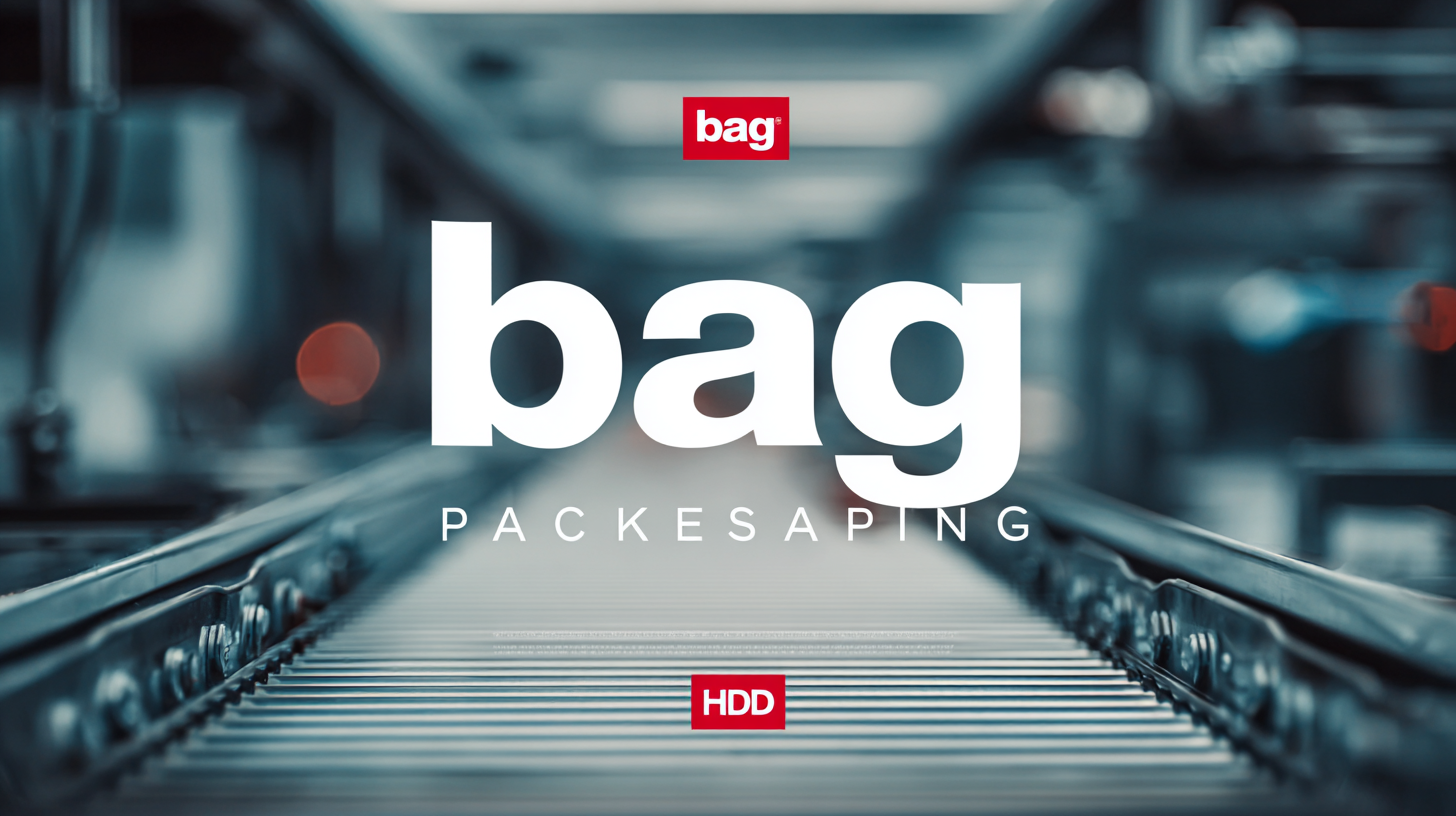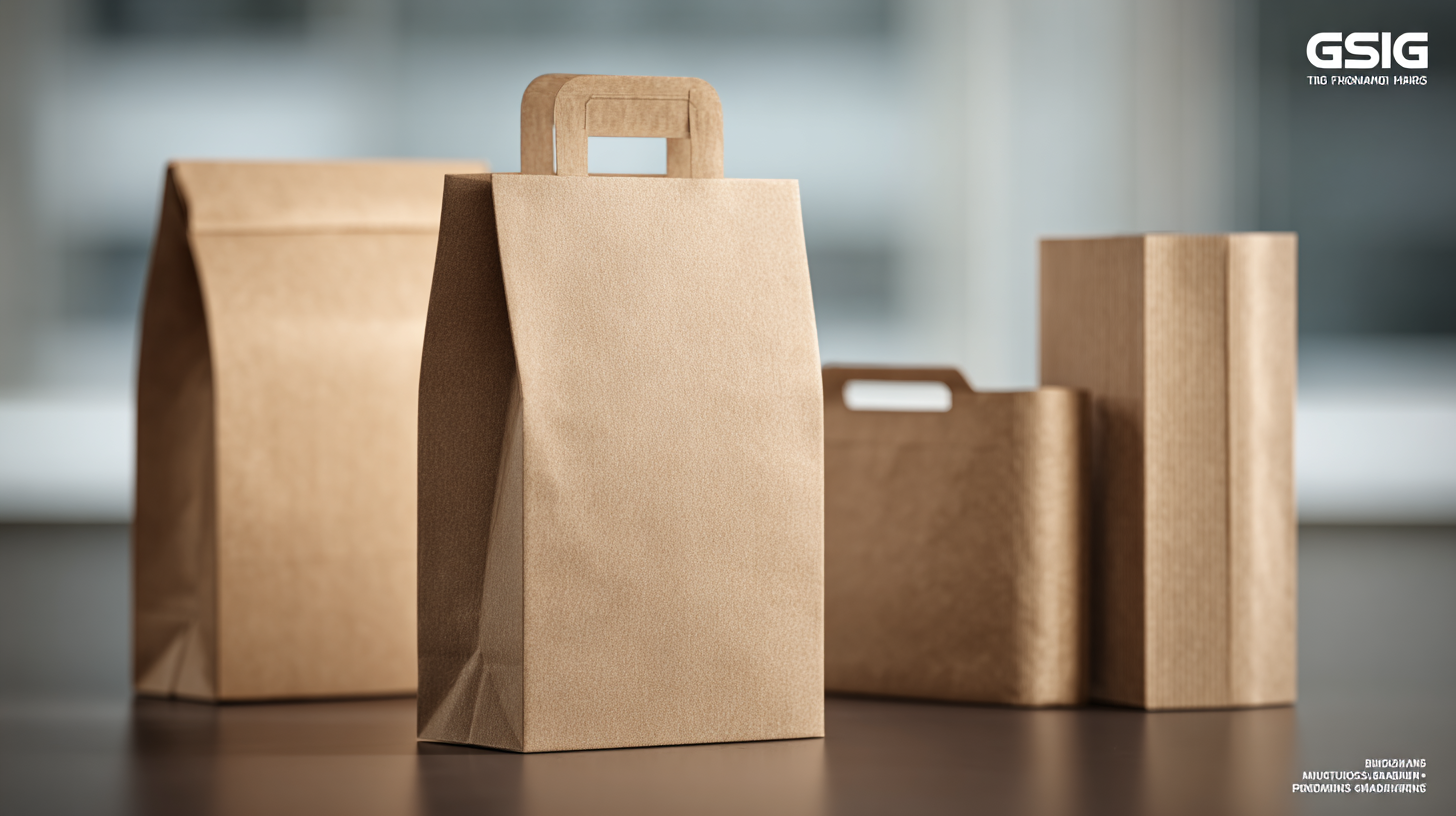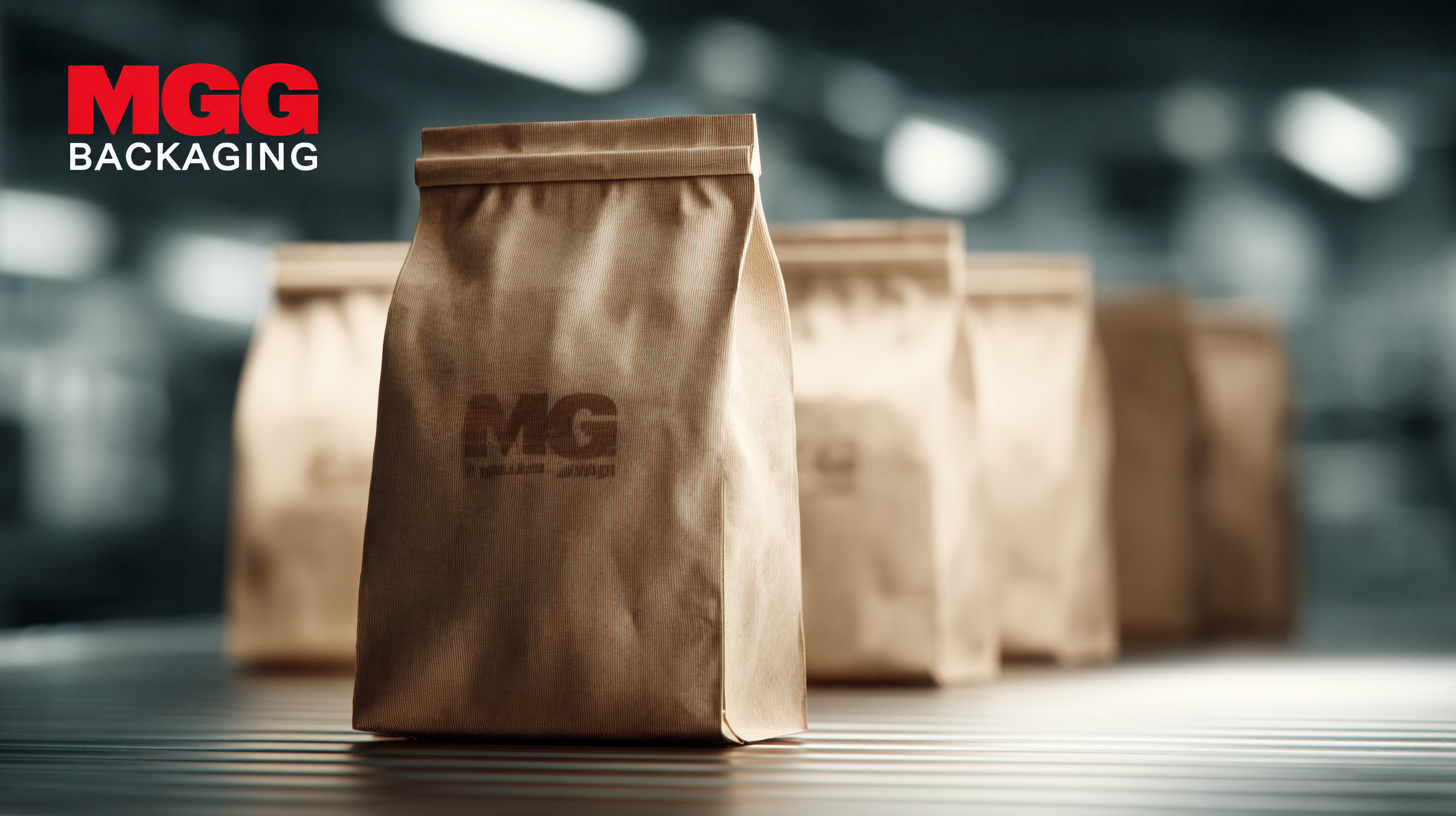Understanding Global Manufacturing Standards for Best Bag Packaging Solutions
In the rapidly evolving landscape of global manufacturing, the importance of adhering to stringent standards in bag packaging cannot be overstated. According to a recent report by Smithers Pira, the global flexible packaging market is projected to reach $300 billion by 2025, reflecting an increasing demand for innovative and reliable bag packaging solutions. This surge in demand underscores the critical need for manufacturers to align with international quality standards to ensure product integrity and consumer safety. As companies strive for excellence in their offerings, the mantra “Made in China, Shared Globally, Quality You Can Trust” resonates deeply within the industry. By understanding and implementing best practices in bag packaging, manufacturers can not only enhance their competitive edge but also contribute to a sustainable future for the global economy.

Global Manufacturing Standards: An Overview for 2025
 As we look towards 2025, understanding global manufacturing standards becomes crucial for optimizing bag packaging solutions. These standards not only ensure quality and safety but also enhance sustainability within the industry. With consumers increasingly prioritizing eco-friendly products, manufacturers must adapt their practices to comply with new regulations and meet market demands.
As we look towards 2025, understanding global manufacturing standards becomes crucial for optimizing bag packaging solutions. These standards not only ensure quality and safety but also enhance sustainability within the industry. With consumers increasingly prioritizing eco-friendly products, manufacturers must adapt their practices to comply with new regulations and meet market demands.
Tip: Regularly review and familiarize yourself with the latest global standards in manufacturing, such as ISO certifications. This proactive approach can help mitigate compliance risks and enhance your packaging processes.
Moreover, as technology advances, embracing digital tools can streamline the adaptation to these standards. Automated systems allow for real-time monitoring and adjustment of production lines, ensuring adherence to the latest guidelines while maximizing efficiency.
Tip: Invest in training for your workforce to improve their understanding of new technologies and global standards. Well-trained employees are key to maintaining high-quality packaging solutions and can significantly contribute to your company's reputation in the global market.
Key Bag Packaging Solutions and their Compliance with Industry Standards
In the competitive world of packaging, compliance with global manufacturing standards is crucial for ensuring the quality and safety of bag packaging solutions. According to a recent report by Smithers Pira, the global flexible plastic packaging market is projected to reach $248 billion by 2024, driven by an increasing demand for sustainable and safe packaging options. This surge emphasizes the need for manufacturers to align their operations with industry standards such as ISO 9001 for quality management systems and ISO 14001 for environmental management. Ensuring compliance not only boosts brand reputation but also minimizes risks associated with product recalls and regulatory penalties.
Tips: When selecting packaging materials, consider certifications that align with international standards to guarantee safety and sustainability. Utilizing certified suppliers can streamline your compliance process and enhance product quality.
Moreover, adopting innovations in bag packaging designs, such as biodegradable materials and advanced sealing technologies, is essential to meet both consumer expectations and regulatory requirements. A report from MarketsandMarkets highlights that the biodegradable segment is expected to grow at a CAGR of 9.5% from 2020 to 2025, reflecting a significant shift towards eco-friendly solutions. Manufacturers must stay informed about evolving standards and trends to maintain a competitive edge.
Tips: Regular training and updates for your team on compliance standards can facilitate a culture of quality and innovation within your organization, thereby boosting overall efficiency and product integrity.
Understanding Global Manufacturing Standards for Best Bag Packaging Solutions
| Packaging Type | Material | Durability Standards | Environmental Compliance | Safety Standards |
|---|---|---|---|---|
| Plastic Bags | HDPE | ASTM D1709 | ISO 14001 | ASTM F963 |
| Kraft Paper Bags | Recycled Paper | FSC Certification | ISO 14001 | EN 13432 |
| Biodegradable Bags | PLA | ASTM D6400 | EN 14995 | ISO 22000 |
| Reusable Bags | Polypropelene | ASTM D1922 | ISO 14001 | BPA Free Certification |
| Woven Bags | PP Woven | ASTM D5034 | ISO 14021 | FDA Compliance |
Comparative Analysis of Global Bag Packaging Standards
The landscape of bag packaging is shaped by various global standards, which are crucial for manufacturers aiming to optimize their products. A comparative analysis demonstrates significant trends in this sector, particularly with the dominance of backpacks, which hold a remarkable 41.2% share in the bags and containers market. This shift emphasizes the need for enhanced manufacturing standards to cater to evolving consumer preferences and functionality.
When examining distribution channels within the market, offline channels account for an impressive 71.3% share, indicating that traditional retail environments remain pivotal for bag sales. These statistics highlight the necessity for manufacturers to align their packaging solutions with global standards that promote both sustainability and efficiency. Innovations in materials are also critical; recent studies reveal that certain packaging types can achieve up to 70% lower emissions compared to their alternatives. This not only benefits manufacturers by reducing their carbon footprint but aligns with global trends toward eco-friendly practices in packaging. As demands grow, particularly in specific markets like medical and food service packaging, ongoing adaptations to manufacturing standards will be essential for leaders in the bag packaging sector.
Understanding Global Manufacturing Standards for Best Bag Packaging Solutions
Emerging Trends in Bag Packaging for Manufacturers in 2025
As we approach 2025, manufacturers must stay ahead of emerging trends in bag packaging to meet evolving consumer demands and regulatory standards. One significant trend is the shift towards sustainable materials. With increasing awareness of environmental issues, manufacturers are incorporating eco-friendly options such as biodegradable plastics and recycled materials. This not only reduces the carbon footprint but also appeals to consumers who prioritize sustainability in their purchasing decisions.
In addition to sustainability, digital technology is reshaping bag packaging solutions. Automation and smart technology are enabling manufacturers to enhance efficiency and reduce waste. Innovations like IoT-enabled packaging can provide real-time data on product condition, thereby improving supply chain transparency. Furthermore, customization is becoming increasingly important; manufacturers are now offering personalized packaging designs to enhance consumer engagement and brand loyalty. Embracing these trends will be crucial for manufacturers looking to thrive in a competitive landscape.

Impact of Sustainability on Global Bag Packaging Standards and Solutions
The impact of sustainability on global bag packaging standards is profound and multifaceted. As businesses and consumers alike become increasingly aware of environmental issues, the demand for eco-friendly packaging solutions has surged. This shift has led to the establishment of new global standards that prioritize renewable materials, recyclability, and waste reduction. For instance, many manufacturers are now adopting biodegradable polymers and sustainable sourcing practices, which not only meet consumer expectations but also contribute to a circular economy.
Moreover, regulatory frameworks around the world are evolving to incorporate sustainability metrics into packaging standards. Countries are implementing stricter guidelines that require manufacturers to disclose the environmental impact of their packaging materials. This trend encourages innovation in the industry, pushing companies to explore alternative resources and manufacturing processes that minimize carbon footprints. Consequently, businesses that prioritize sustainability in their bag packaging solutions are not only complying with these evolving standards but are also positioning themselves as leaders in a competitive market. The commitment to sustainable practices is not just an ethical imperative; it's a strategic advantage in today's environmentally conscious global economy.
